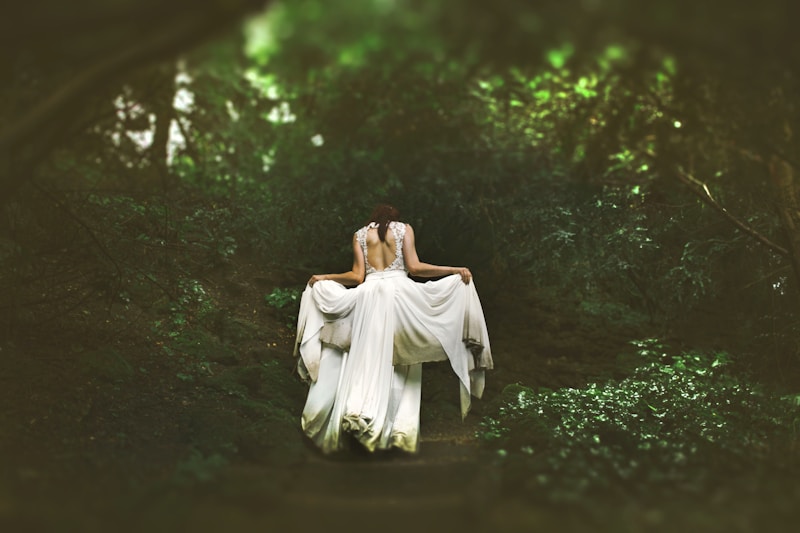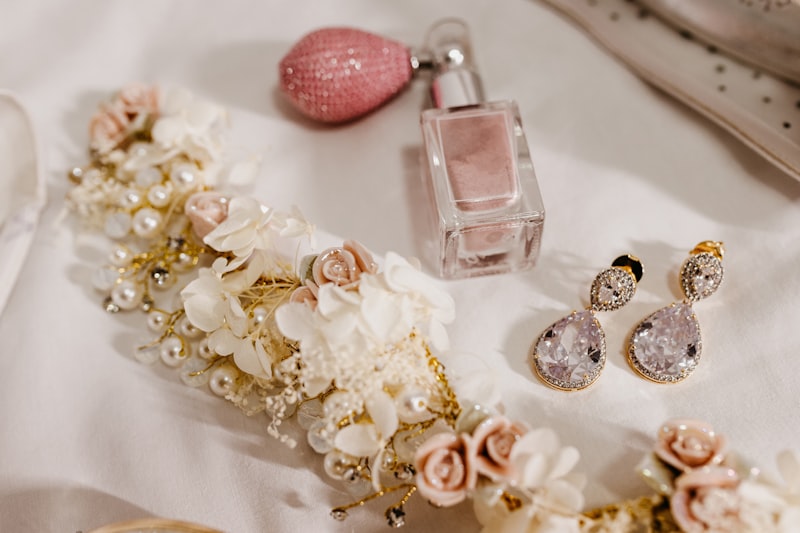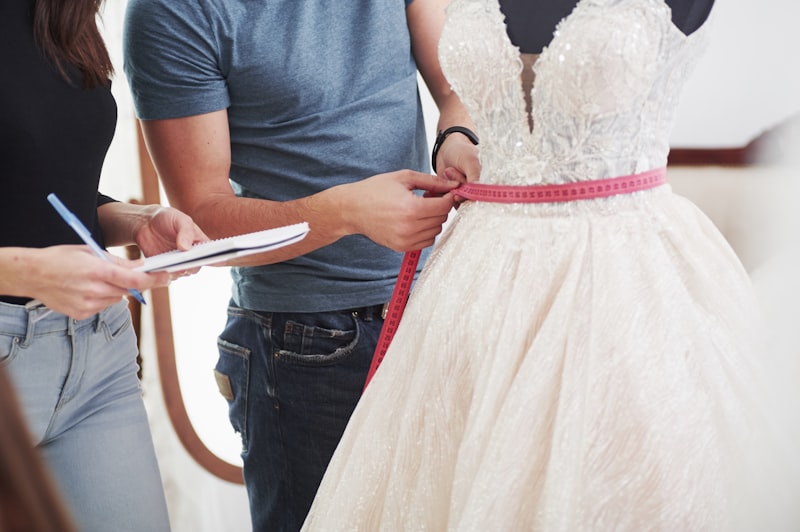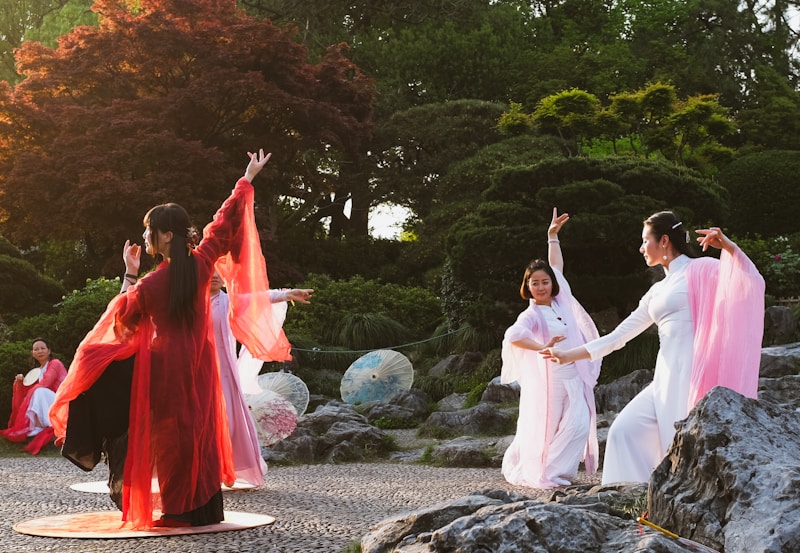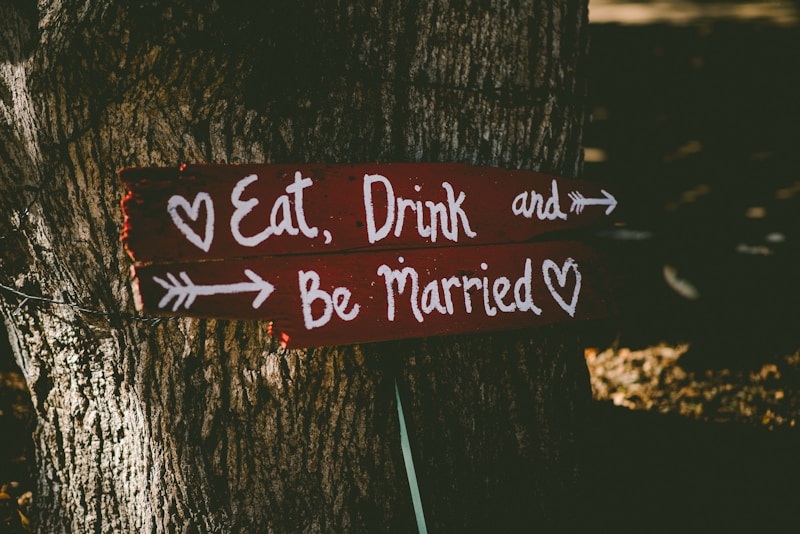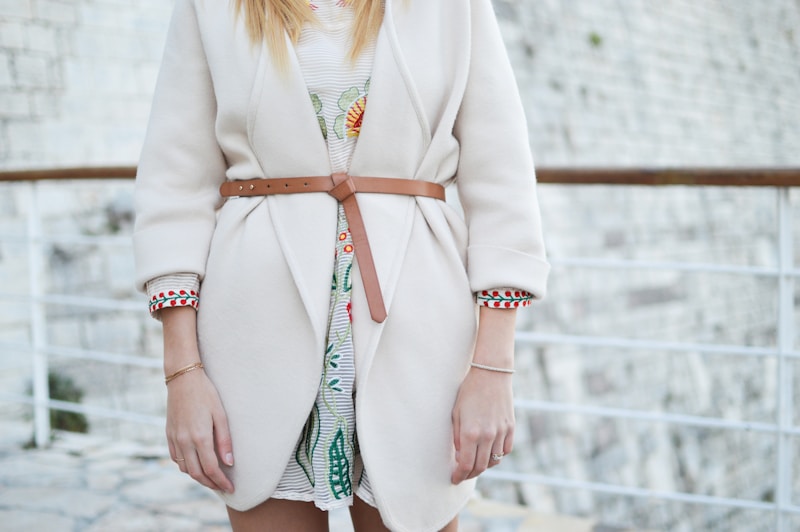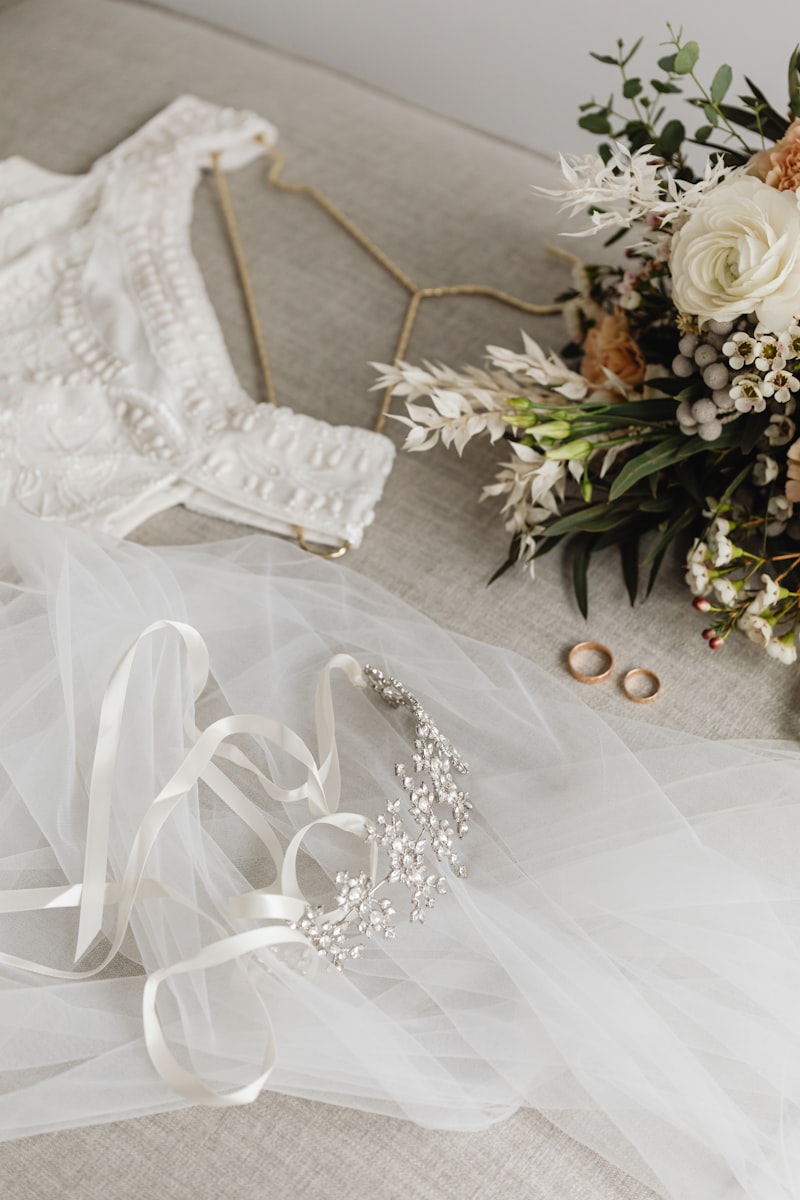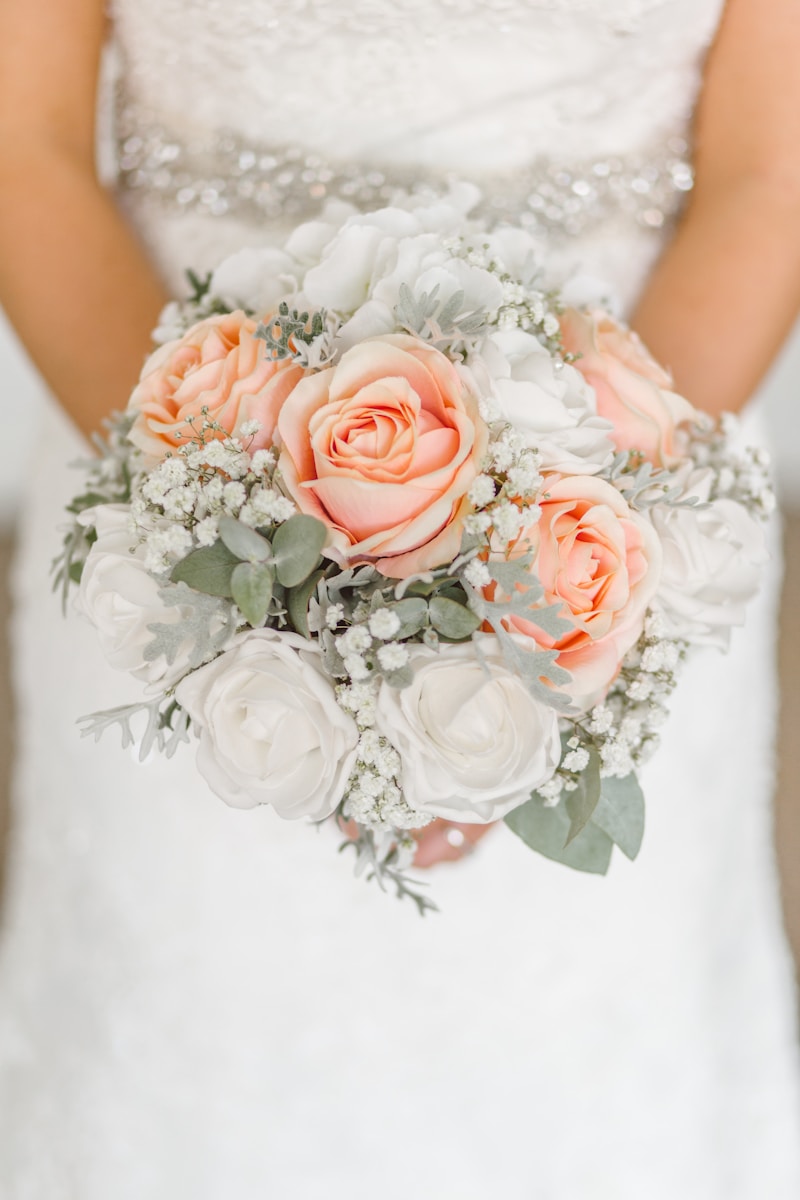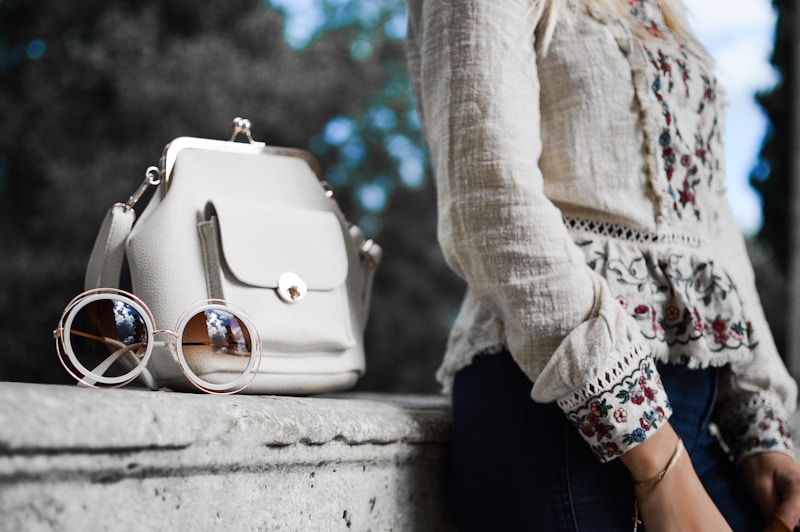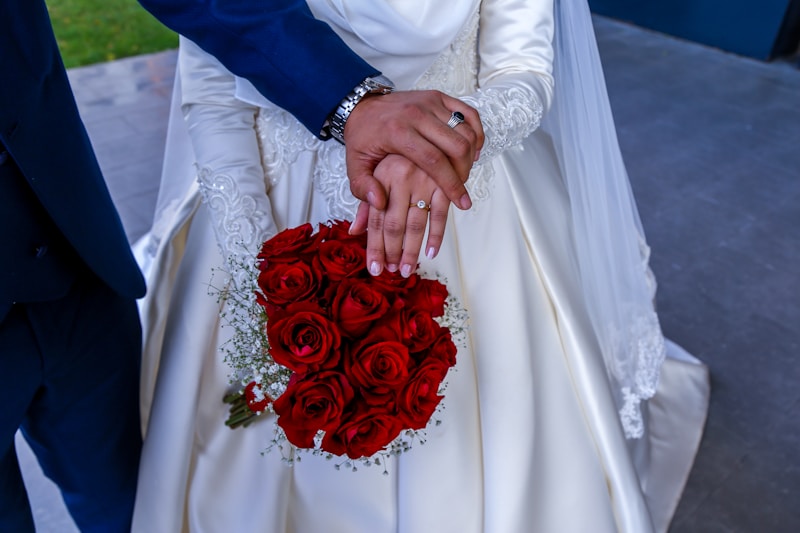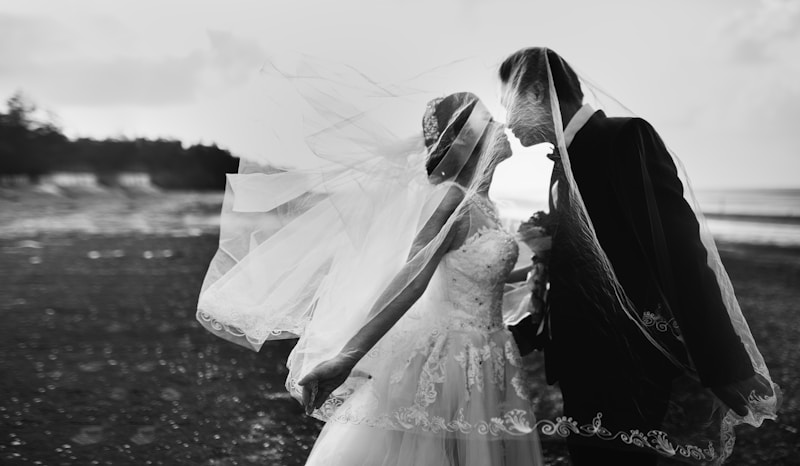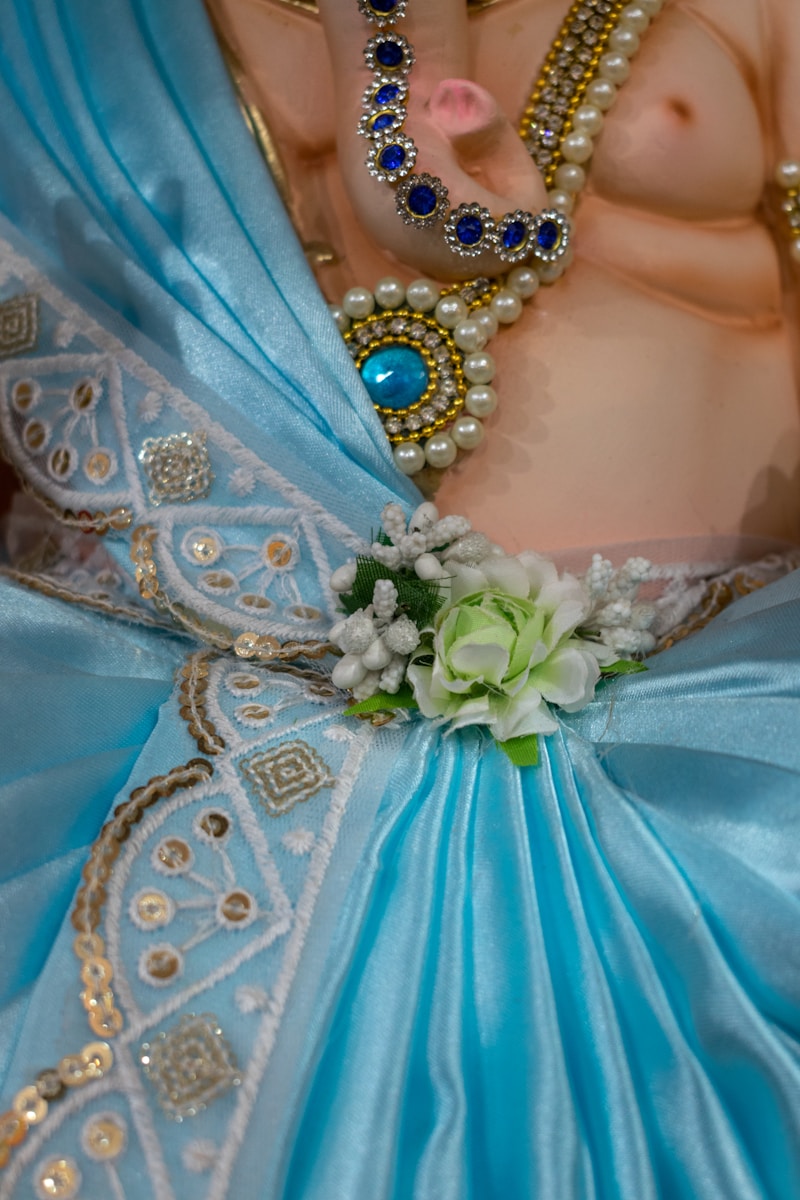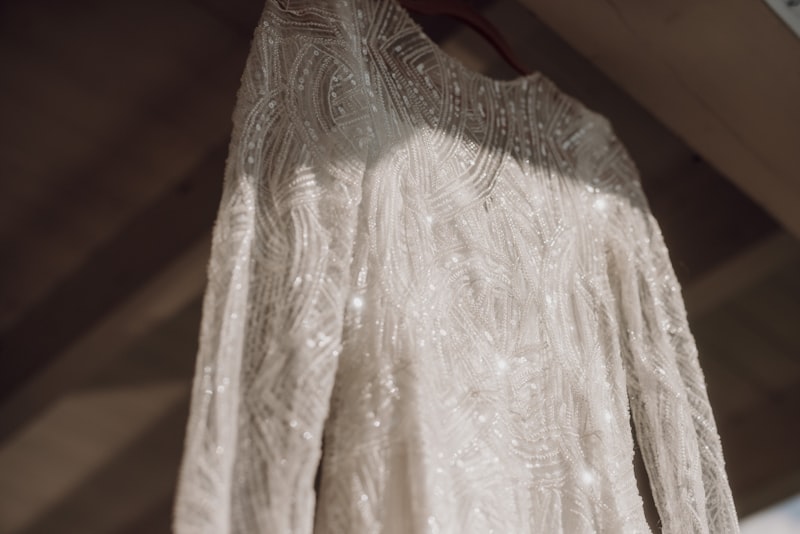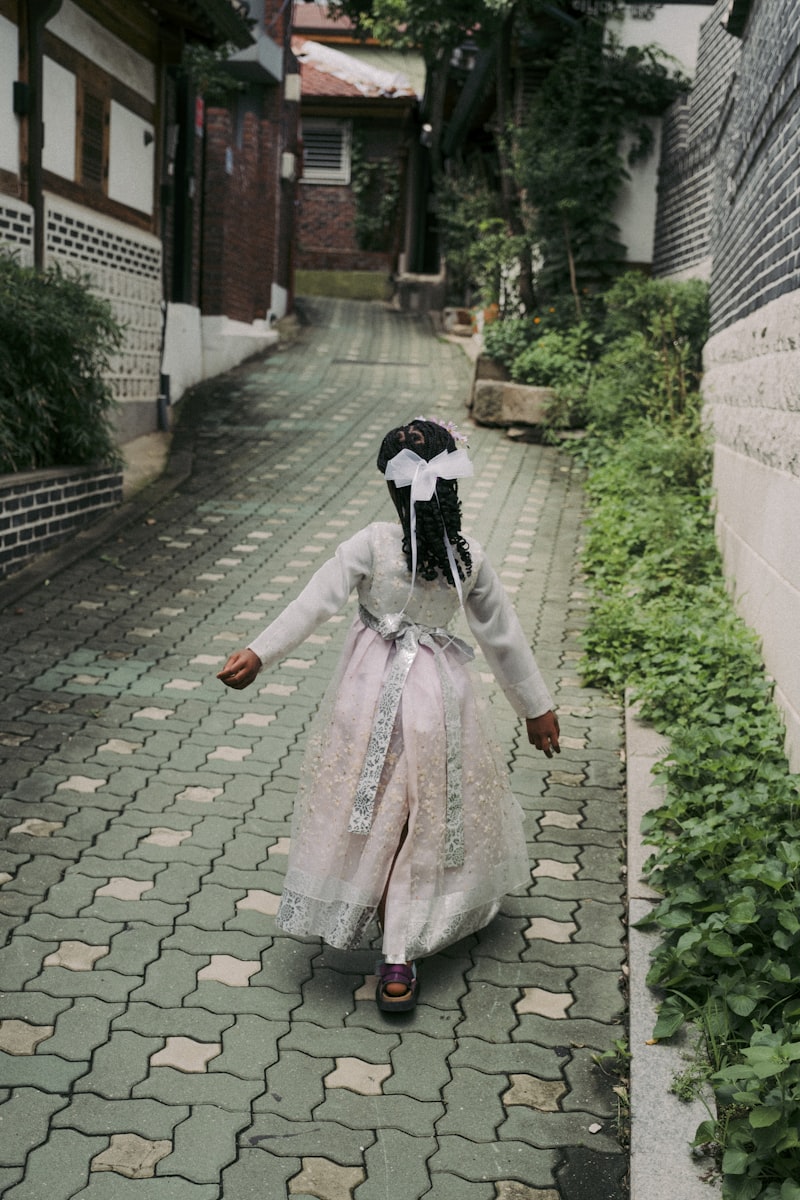The Enchanting Influence of Fairy Tales on Wedding Attire
As couples prepare for one of the most significant days of their lives, the quest for the perfect wedding attire often leads them through a myriad of styles, fabrics, and inspirations. One of the most captivating influences on modern wedding attire is fairy tales. These timeless stories not only inspire the dreams of young hearts but also shape the fashion choices of brides and grooms alike. In this article, we explore how fairy tales influence wedding attire today, highlighting popular motifs, styles, and trends that bring these magical stories to life.The Romantic Allure of Fairy TalesFrom Cinderella's iconic glass slippers to the elegant gowns worn by Disney princesses, fairy tales have long captured our imaginations. Many brides find themselves inspired by the enchanting visuals and romantic themes of these beloved stories. The influence of fairy tales can be seen in various details, from the color palette to the silhouette of the wedding dress. Let's delve into how fairy tales shape wedding fashion and the elements they contribute to modern bridal couture.1. Iconic Styles Inspired by Fairy TalesFairy tales provide a wealth of design inspiration, often translating into beautiful and unforgettable wedding attire. Popular styles influenced by fairy tales include:Fairy TaleInspiration for Wedding AttireDescriptionCinderellaBallgown StyleA voluminous skirt with a fitted bodice, often paired with intricate embellishments.Snow WhiteClassic and Timeless DressesLittle details suc...
Diverse Interpretations of Bridal Attire: A Global Perspective
The concept of bridal attire has evolved significantly over the years, influenced by cultural, social, and personal factors. From traditional gowns to modern interpretations, each culture brings its unique flair to how brides adorn themselves on their special day. In this article, we explore the diverse interpretations of bridal attire around the world, highlighting various styles, fabrics, and the meanings behind them.Understanding Bridal Attire Across CulturesThe roots of bridal attire can be traced back to ancient traditions, each with its own significance and symbolism. While Western bridal attire is often associated with the white wedding dress, other cultures have alternative colors, fabrics, and styles that reflect their heritage. Below, we delve into several cultures and their unique interpretations of bridal attire:CultureBridal AttireKey FeaturesWestern CountriesWhite Wedding DressSimplicity, elegance, often long veils and trainIndiaLehenga or SareeRich colors, intricate embroidery, and heavy jewelryChinaCheongsam or QipaoBright red, symbolizes good fortune, often embellished with goldAfrican CountriesTraditional Kente ClothVibrant patterns and colors, reflecting ethnicity and prideMiddle EastAbaya or Wedding DressLuxurious fabrics, often adorned with intricate designs and patternsCrucial Elements of Bridal AttireBridal attire often encompasses more than just the dress. It includes accessories, hairstyles, and even makeup that collectively create the look. Let’s loo...
Evolving Gender Norms in Wedding Attire: Redefining Tradition
Over the years, wedding attire has transcended traditional gender norms, reflecting the evolving attitudes towards gender identity and expression. In today’s world, couples increasingly choose attire that resonates with their personal style rather than adhering strictly to societal expectations. This article delves into the shifting dynamics of wedding attire, examining how evolving gender norms are redefining what it means to dress for a wedding.Historical Context of Wedding AttireWedding attire has traditionally been steeped in gender norms. Historically, women wore white dresses symbolizing purity and innocence, while men donned dark suits, typically in black or navy. These established norms have persisted for decades, influencing how couples perceive their roles on their wedding day. However, as society's views on gender evolve, so too do the expectations surrounding wedding attire.The Shift in Gender NormsGender norms are, by nature, socially constructed roles that dictate how individuals should behave based on their perceived gender. The past decade has witnessed significant shifts in these norms, particularly regarding fashion and self-expression. Celebrities, designers, and influencers are increasingly challenging these binary norms, advocating for options that cater to all gender identities.Influence of CelebritiesIn recent years, many high-profile weddings have gained attention due to their unconventional attire choices. For instance, high-profile figures such as Ja...
Bridal Fashion and Social Media Trends: Shaping the Future of Weddings
Understanding Bridal Fashion in the Digital AgeThe intersection of bridal fashion and social media trends has changed the way brides approach their wedding planning. In today’s digital age, platforms like Instagram, Pinterest, and TikTok have become essential tools for brides seeking inspiration and guidance. This article explores how social media is influencing bridal fashion, what trends are emerging, and how brides can leverage these platforms to create their dream wedding.The Influence of Social Media on Bridal FashionSocial media has democratized fashion in many ways. Gone are the days when bridal fashion was dictated solely by traditional fashion houses. Now, brides have access to a wealth of inspiration at their fingertips. They can discover styles, share ideas, and connect with influencers and designers directly. Here’s how social media has reshaped the landscape:PlatformInfluence on Bridal FashionPopular TrendsInstagramVisual platform for sharing bridal looksBohemian gowns, vintage accessoriesPinterestIdea board for wedding planningRustic themes, minimalistic designsTikTokShort-video format for showcasing trendsQuick changes, unique stylesEmerging Trends in Bridal FashionAs we navigate through 2023, several bridal fashion trends are gaining traction on social media. Understanding these trends can help brides make informed choices about their wedding attire.Sustainable Fashion: Eco-friendly wedding dresses made from sustainable materials are trending as brides become ...
Exploring the Symbolism of the White Wedding Dress Worldwide
Wedding traditions vary significantly across different cultures and regions, yet one element that has gained global recognition is the white wedding dress. The symbolism behind the white wedding dress transcends borders, embodying themes of purity, love, and new beginnings. This article delves into the rich tapestry of meanings associated with white wedding dresses across various cultures, the historical evolution of this tradition, and the implications of color in wedding attire. Join us as we explore the universal appeal of the white wedding dress, illustrated with cultural insights and stunning visuals.The Historical Context of the White Wedding DressThe tradition of wearing a white dress on one’s wedding day dates back to the mid-19th century. Queen Victoria of England popularized the white gown when she chose a white gown made of silk satin for her wedding to Prince Albert in 1840. Before that, brides generally wore their best dresses, regardless of color.Queen Victoria's choice shifted the perception of wedding dresses and set a precedent that still influences modern wedding attire. Blue, for instance, was traditionally seen as the color for bridal wear, symbolizing fidelity. However, the elegance and purity associated with white soon overshadowed other colors, leading to its global acceptance.Symbolism Across CulturesWhile the white wedding dress is widely recognized today, its symbolism can differ vastly across cultures:CultureSymbolismWestern CulturesPurity and Innoc...
Transformations in Personal Expressions Through Bridal Wear
Bridal wear has long transcended mere fashion; it embodies emotional journeys, cultural narratives, and personal transformations. Throughout history, brides have utilized their attire as a profound form of self-expression, a trend that continues to evolve in today's society. In this article, we will explore the various transformations in personal expressions through bridal wear, highlighting the cultural significance, contemporary trends, and the emotional impact of these garments on brides around the world.The Cultural Significance of Bridal WearBridal wear varies significantly across cultures, each with its own meanings and traditions. For instance, in many Western cultures, white wedding gowns symbolize purity and innocence, a tradition popularized by Queen Victoria of England in the 19th century. In contrast, traditional Indian bridal attire, often characterized by vibrant colors and intricate embellishments, tells a different story—one of celebration, vibrancy, and social status.CultureCommon ColorsSignificanceWesternWhite, IvoryPurity, InnocenceIndianRed, GoldProsperity, MarriageChineseRedHappiness, Good FortuneJapaneseWhite, RedPurity, JoyHistorical TransformationsFrom the simple gowns of the earlier centuries to today's intricately designed bridal outfits, historical transformations showcase how societal changes influence bridal fashion. The Victorian era emphasized modesty, while the 1920s introduced a more carefree, boyish silhouette with shorter hemlines and flappe...
Bridal Fashion and Cross-Cultural Exchange: A Journey Through Cultures
Introduction to Bridal Fashion and Cross-Cultural ExchangeBridal fashion is not just about the attire worn on one of the most significant days in a person’s life; it encapsulates history, culture, and personal identity. As globalization has brought the world closer, a fascinating cross-cultural exchange has unfolded in the realm of bridal fashion, allowing different traditions to merge while honoring their unique roots. In this article, we will explore the influence of cultural exchanges on bridal attire, the evolution of trends, and the significance of these changes.The Historical Context of Bridal FashionBridal fashion has evolved considerably over the decades, influenced by various cultural, social, and economic factors. Traditionally, many cultures had specific colors, styles, and accessories that were customary for brides. For instance, in Western cultures, white has become the symbol of purity and is predominantly used in bridal gowns, started by Queen Victoria in the 19th century. Meanwhile, in countries like India, red is considered auspicious, and brides often wear elaborate lehengas or saris during their weddings. Bridal Attire Around the GlobeHere’s a brief overview of bridal attire in various cultures:CountryTypical AttireSignificanceIndiaLehenga or SariRed symbolizes prosperity and fertilityJapanShiro-muku (white kimono)Represents purity and simplicityChinaQipao or Red DressRed represents good luck and happinessWestern CountriesWhite Wedding GownSymbolizes purity...
The Role of Fashion Designers in Wedding Attire: Shaping Dreams and Trends
Understanding the Impact of Fashion Designers on Wedding AttireWeddings are monumental life events, and the attire worn by the bridal party plays a crucial role in setting the mood and tone for the celebration. Fashion designers are at the heart of this transformation, bringing imaginative visions to life. This article delves into the multifaceted role of fashion designers in crafting wedding attire that not only fulfills but also enhances the dreams of couples worldwide.1. The Evolution of Wedding AttireHistorically, wedding attire has evolved significantly. In the past, brides wore casual dresses that symbolized their simplicity. However, the influence of fashion designers dramatically reshaped wedding fashion. The modern bride now seeks more than just a dress; she desires a bespoke wedding experience that reflects her personal style. Fashion designers are pivotal in blending tradition with contemporary trends to meet these expectations.2. The Creative Process of Fashion DesignersCrafting wedding attire involves a unique creative process. Fashion designers begin with an initial concept, often inspired by various elements such as culture, art, and individual client visions. They utilize their expertise to select fabrics, colors, and designs that resonate with the couple's narrative. This journey often leads to the creation of beautiful, custom pieces that tell a story.2.1. Research and InspirationFashion designers immerse themselves in the rich world of fashion trends and br...
How Hollywood Shapes Wedding Dress Trends: A Deep Dive into Fashion Influence
The world of weddings is a unique universe where romance and style converge, defined by diverse cultural traditions and personal tastes. However, one of the most significant influences on wedding fashion comes from Hollywood. This article explores how the vibrant world of cinema shapes wedding dress trends, focusing on high-profile celebrities as trendsetters, and how their choices resonate with brides all over the globe. Let's dive into the factors that contribute to these trends, and how brides can draw inspiration from their favorite stars.The Hollywood Effect on Wedding FashionHollywood has an unmatched ability to set trends that quickly permeate various aspects of fashion, including wedding attire. The red carpet, a space where celebrities showcase the latest designs, often features stunning gowns that inspire bridal collections. Designers are keen to create dresses that reflect current trends, ensuring that brides can channel their favorite celebrities on their special day.Celebrity Weddings that Captured AttentionHigh-profile weddings often serve as fashion benchmarks. When celebrities tie the knot, their wedding dresses become iconic pieces. A few notable examples include: Grace Kelly: Her stunning gown designed by Helen Rose in 1956 is still admired today, influencing countless bridal designs with its elegance. Kate Middleton: The duchess's lace-sleeved gown by Alexander McQueen surged requests for similar designs, rejuvenating vintage styles. Meghan Markle:...
Enduring Legacies in Bridal Gown Design: A Journey Through Time
Bridal gowns hold a special place in wedding traditions around the world, symbolizing elegance, love, and cultural heritage. As we explore the enduring legacies in bridal gown design, we uncover the influences that have shaped modern wedding attire. This article delves into historical inspirations, notable designers, and trends that continue to resonate today. From vintage lace to contemporary silhouettes, the evolution of bridal gowns reflects societal changes, artistic expressions, and the personal stories of those who wear them.Historical Influences on Bridal Gown DesignThe roots of bridal gown design can be traced back centuries, with varying global influences marking their evolution. In many cultures, the wedding dress has signified not only the union of two individuals but also the merging of families and traditions. Let's take a look at some historical milestones in bridal fashion:EraNotable FeaturesInfluences18th CenturyHeavy fabrics, elaborate embroideryRoyalty and nobility, opulent style19th CenturyWhite lace, full skirtsQueen Victoria's wedding to Prince AlbertEarly 20th CenturySimpler designs, tea-length gownsWorld War I impacts on fashion1970s - 1980sBohemian styles, unique fabricsThe flower power movement and cultural shifts21st CenturyInclusive designs, sustainabilityChanging societal norms and valuesThe Victorian Era: A Turning PointThe Victorian era brought significant changes to bridal fashion, largely influenced by Queen Victoria's choice to wear a white go...
From Vintage to Modern: The Evolution of Bridal Fashion
The journey of bridal fashion over the decades reflects not only the changes in design and fabric but also societal and cultural shifts. Understanding this evolution helps us appreciate how far we have come in terms of style, choice, and expression of individuality on the most special day of one’s life. In this article, we'll explore bridal fashion from vintage styles to contemporary trends, including key influences, iconic styles, and helpful tips for brides-to-be. We will also delve into how various eras have influenced modern bridal choices.The Roots of Bridal FashionBridal fashion began to take shape in the early 19th century. Before this period, brides typically wore their best dresses, regardless of color or style. However, Queen Victoria’s wedding to Prince Albert in 1840 marked a significant point in bridal fashion. She chose a white gown made of silk satin, a decision that would set off a trend that continues to this day.Key Vintage Bridal StylesBridal fashion has evolved through various eras, each leaving a unique impact. Let’s break down the distinct styles through the decades.EraKey FeaturesPopular Fabrics1840s - 1860sCrinolines, lace details, bell-shaped skirtsSatin, silk1920sFlapper dresses, dropped waist, shorter hemlinesChiffon, lace1950sA-line silhouettes, modest necklines, decorative detailsOrganza, tulle1970sBohemian influences, flowy gowns, long sleevesSilk, cotton1980sVoluminous skirts, exaggerated sleeves, dramatic veilsSatin, taffetaThe Impact of the 19...
Exploring the Media Representation of Bridal Gowns: Trends, Symbolism, and Cultural Impact
Bridal gowns have long been a significant aspect of wedding culture, not only as a personal statement of style but also as a reflection of broader societal values. The media representation of bridal gowns encapsulates various themes, trends, and cultural shifts that influence how these garments are perceived. In this article, we will delve into the evolution of bridal gowns as portrayed in different media forms, exploring factors like design trends, cultural significance, and the impact of celebrity weddings.The Evolution of Bridal Gowns in MediaHistorically, bridal gowns were predominantly white, symbolizing purity and innocence. However, the media's portrayal has diversified significantly over the years. Today, we witness myriad styles, colors, and cultural influences. The following table summarizes key trends in bridal gown representations across various media:EraMedia InfluenceDesign TrendsCultural SignificanceVictorian EraPaintings & LiteratureElaborate lace, long trainsSymbol of social status1920sFilm & PhotographyFlapper styles, shorter hemlinesWomen’s liberation1980sTelevision & MagazinesPuffy sleeves, grandeurFantasy and opulence2010s-PresentSocial Media & InfluencersMinimalist styles, diverse backgroundsIndividual expression and inclusivityTrends in Media RepresentationIn recent years, the media representation of bridal gowns has increasingly embraced diversity. Platforms like Instagram and Pinterest have revolutionized how brides shop and showcase their gowns, lead...
The Narrative of Tradition Versus Modernity in Bridal Fashion
Understanding the Dichotomy of Bridal FashionBridal fashion has always been a fascinating subject, encapsulating cultural narratives, social transformations, and personal stories. The tension between tradition and modernity in bridal wear is a reflection of broader societal changes, influencing not just choices in attire but also the very essence of weddings. This article explores this narrative, how it manifests in different cultures, and what future trends might be in store.The Role of Tradition in Bridal FashionTradition plays a pivotal role in shaping bridal fashion around the world. Many cultures have specific customs that dictate what a bride should wear. For example, in Western cultures, the white wedding dress is a symbol of purity and has its roots in Queen Victoria's choice of attire for her marriage to Prince Albert in 1840. In contrast, in many Asian cultures, red is the predominant color for bridal dresses, symbolizing good fortune and joy. Table 1: Traditional Bridal Attire Around the WorldCultureTraditional Bridal AttireSymbolismWesternWhite Wedding DressPurity, New BeginningsIndianRed Saree or LehengaGood Fortune, ProsperityChineseQipao (Cheongsam)Happiness, ProsperityAfricanKanga or WrapperCultural Identity, PrideModern Influences on Bridal FashionAs society evolves, so does the concept of bridal wear. Modern bridal fashion often challenges the conventions that have been in place for centuries. Today, many brides choose to step outside the traditional norms, ...
The Impact of Globalization on Wedding Traditions: A Cultural Exchange
The Influence of Globalization on Wedding TraditionsWedding traditions have long been a reflection of cultural values, societal norms, and historical contexts. However, in recent decades, the landscape of these practices has transformed significantly due to the forces of globalization. The world is more interconnected than ever, leading to the blending and adaptation of wedding customs across different cultures. This article explores the profound impact of globalization on wedding traditions, highlighting its advantages, challenges, and emerging trends.Understanding GlobalizationGlobalization refers to the increasing interdependence among countries through trade, communication, and cultural exchange. This phenomenon allows for the rapid dissemination of ideas, practices, and traditions. Whether it is through the internet, travel, or media, people are exposed to diverse ways of life, which inevitably influences their own customs, particularly when it comes to significant life events like weddings.1. The Blending of TraditionsOne of the most noticeable impacts of globalization on wedding traditions is the blending of different cultural practices. Couples today often draw inspiration from various sources, creating unique ceremonies that reflect their multicultural backgrounds.Cultural InfluenceTraditional ElementsModern AdaptationsWestern WeddingsWhite dresses, formal receptions, vowsDiverse locations, unique themes, personalized ceremoniesIndian WeddingsVibrant colors, rituals,...
The Impact of Fashion Weeks on Bridal Trends
Fashion weeks across the globe have long been a vital force in shaping the trends and styles we see not just on the runway, but also in everyday fashion. However, a pivotal area that often remains underappreciated is the impact that fashion weeks have on bridal trends. With designers showcasing their latest collections during these glamorous events, it’s no surprise that brides-to-be take notice, ultimately shaping the way modern weddings are planned and executed. In this article, we will explore how fashion weeks influence bridal fashion, the latest trends emerging from these events, and what brides can expect in the upcoming seasons.Understanding Fashion Weeks and Their ImportanceFashion weeks are entrenched in the fashion industry, with events held in major cities like New York, Paris, Milan, and London. These occasions serve as platforms for designers to unveil their latest collections to a global audience, including buyers, media, and fashion enthusiasts. Significant fashion weeks often set the tone for upcoming seasons, establishing trends that will trickle down into mainstream fashion.The Bridal Industry's ResponseThe bridal fashion industry is not detached from this influence. Major bridal shows often coincide with the mainstream fashion weeks, showcasing beautiful, avant-garde ideas that brides may wish to emulate. Bridal designers are keen observers of these trends and frequently draw inspiration from the latest styles showcased on the runway. This can lead to chang...
Shift from Traditional to Contemporary Bridal Styles: A Complete Guide
Weddings are not just a celebration; they are a reflection of love, culture, and individual style. Over recent years, we have witnessed a significant shift from traditional bridal styles to more contemporary designs. This article will explore various aspects of this shift, including the different bridal styles available, current trends, and how to choose the perfect wedding attire.Understanding the ShiftThe transition from traditional to contemporary bridal styles can be attributed to multiple factors, including cultural changes, increased global influences, and the desire for personalization. Modern brides are more inclined to express their individuality on their big day, challenging age-old traditions.Key Differences Between Traditional and Contemporary StylesFeatureTraditional Bridal StylesContemporary Bridal StylesSilhouetteA-line, Ball GownSheath, Mermaid, JumpsuitFabricsSilk, SatinLace, Tulle, Sustainable FabricsColorIvory, WhiteChampagne, Blush, Bold ColorsAccessoriesVeils, TiaraFloral Crowns, Statement JewelryThemeClassic, Church WeddingsDestination Weddings, Boho-ChicCurrent Trends in Contemporary Bridal StylesAs we dive deeper into modern bridal trends, several styles have emerged as favorites among brides worldwide.1. MinimalismMinimalist bridal gowns are all about simplicity and elegance. Featuring clean lines and understated designs, this style resonates with brides looking for a classic yet modern look. The use of high-quality fabrics ensures that every detail s...
Embracing Inclusivity in Contemporary Wedding Dress Styles
Weddings are a celebration of love, unity, and diversity. In recent years, there has been a significant shift towards inclusivity in contemporary wedding dress styles. This movement has opened the doors for all individuals, regardless of body type, ethnicity, or gender identity, to find the perfect gown that embodies their unique personality and style. In this article, we will explore the various elements of inclusivity in wedding dress designs, trends that emphasize diversity, and the importance of representation in the bridal fashion industry. Understanding Inclusivity in Bridal Fashion Inclusivity in contemporary wedding dress styles refers to the acknowledgment and celebration of diverse body types, styles, and cultural backgrounds. Traditionally, bridal fashion has catered to a narrow standard of beauty, often overlooking the needs and desires of a large segment of the population. However, modern designers are breaking these barriers by creating dresses that are accessible, stylish, and, most importantly, inclusive. The Importance of Size Diversity One of the most significant aspects of inclusivity in wedding dress styles is the commitment to size diversity. Numerous designers now offer extended size ranges, acknowledging that brides come in all shapes and sizes. This has transformed the shopping experience, allowing individuals to find gowns that not only fit well but also make them feel beautiful and confident. Size Range Designer A Designer B Designer C ...
Cultural Influences on Bridal Attire: A Global Perspective
Bridal attire has long reflected the unique cultural backgrounds, traditions, and practices of different regions around the world. These garments symbolize love, commitment, and the rich history of the cultures they originate from. As globalization continues to blend various customs, understanding the cultural influences on bridal attire is vital for anyone looking to appreciate the diversity and significance of wedding fashion. This article delves into the beautiful tapestry of bridal attire across various cultures, highlighting the influences that shape these garments.The Historical Context of Bridal AttireThroughout history, bridal attire has evolved, influenced by societal norms, economic factors, and cultural heritage. In ancient times, brides wore garments that reflected not only their social status but also their family's wealth and lineage. For example, during the Ming Dynasty in China, emperors would often choose brides based on their beauty and virtue, leading to the elaboration of their wedding gowns with intricate embroidery and luxurious fabrics.Cultural VariationsThe various influences on bridal attire are rooted in diverse cultural practices. Below is a summary table that showcases some traditional bridal attires from around the world and their cultural significance.CountryBridal AttireCultural SignificanceIndiaLehenga and DupattaSymbolizes prosperity and femininity, often adorned with intricate embroidery.ChinaQipao or ChangshanRepresents good fortune and happ...
The Captivating Evolution of Bridal Wear in Cinema
The world of cinema has always been a powerful medium that reflects cultural values and societal norms. One of the most captivating aspects of this art form is the portrayal of weddings—especially the bridal wear that accompanies them. The evolution of bridal wear in cinema offers insights not only into fashion trends but also into changing gender roles, cultural influences, and the cinematic narrative itself. In this article, we will explore the fascinating journey of bridal wear in films, highlighting notable examples, influential designers, and the broader implications of these styles in society. The Historical Context of Bridal Wear in Film The representation of brides in film can be traced back to the early days of cinema. In the silent film era, brides were often depicted with sheer simplicity, focusing more on the storytelling aspect than on the attire. Traditional white wedding dresses, symbolizing purity and innocence, were not always the norm. As cinema evolved through the decades, so did the trends in bridal fashion, mirroring societal changes. The 1920s: A Shift Towards Modernity In the 1920s, flapper culture influenced bridal wear significantly. Women began to seek more freedom, and this was reflected in the style of wedding dresses. The feminine silhouettes became more relaxed, celebrating the liberation of women. Prominent films from this era showcased brides wearing simple, elegant dresses adorned with lace and beads, capturing the essence of the Jazz Ag...
The Cultural Significance of Wedding Dress Colors: A Global Perspective
Wedding dresses are more than just garments; they are steeped in meaning, tradition, and cultural significance. The choice of color for a wedding dress can convey deep messages and reflect cultural values, history, and personal beliefs. This article will explore the cultural significance of wedding dress colors across various societies worldwide, offering insights into the customs that shape these choices. We will delve into traditional colors, modern interpretations, and their implications in different cultures. Throughout the article, we will employ SEO strategies to ensure optimal engagement and reach in search engines, making it a valuable resource for those looking to understand this fascinating aspect of weddings. Historical Overview of Wedding Dress Colors The tradition of wearing specific colors for wedding dresses has evolved over time. In the West, the white wedding dress is iconic, thanks largely to Queen Victoria's choice to wear white during her marriage to Prince Albert in 1840. However, this was not always the norm. Prior to this, brides wore dresses of various colors, each signifying different values and beliefs. In Eastern cultures, colors such as red are dominant, symbolizing good fortune and happiness. This divergence prompts an exploration of the cultural significance behind these colors. White: Purity and Innocence in Western Cultures In Western cultures, white is synonymous with purity and innocence. The adoption of the white dress by Queen Victor...
